


Chess News


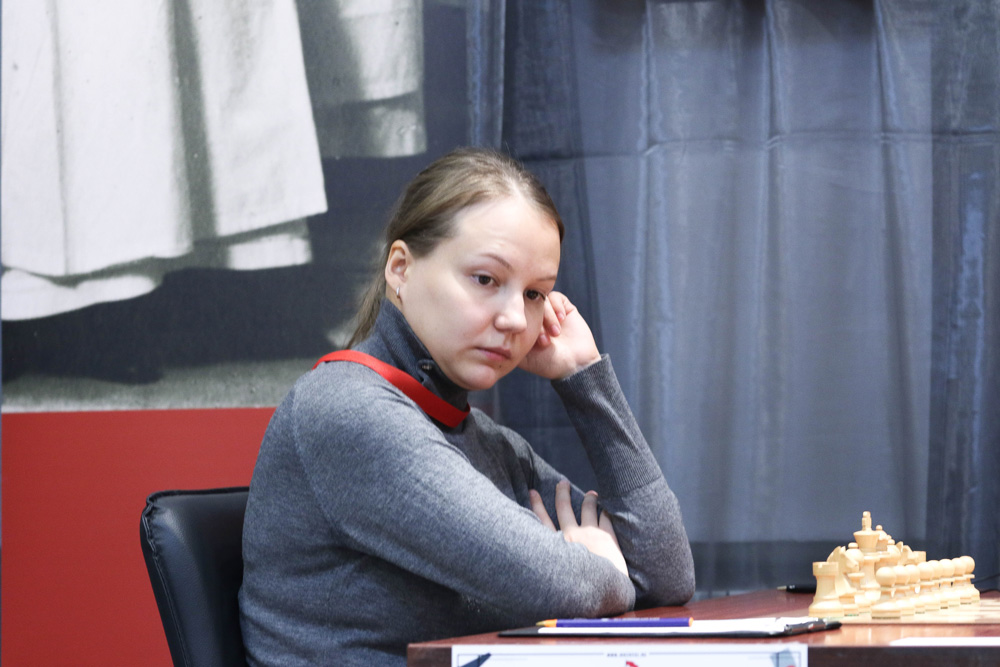


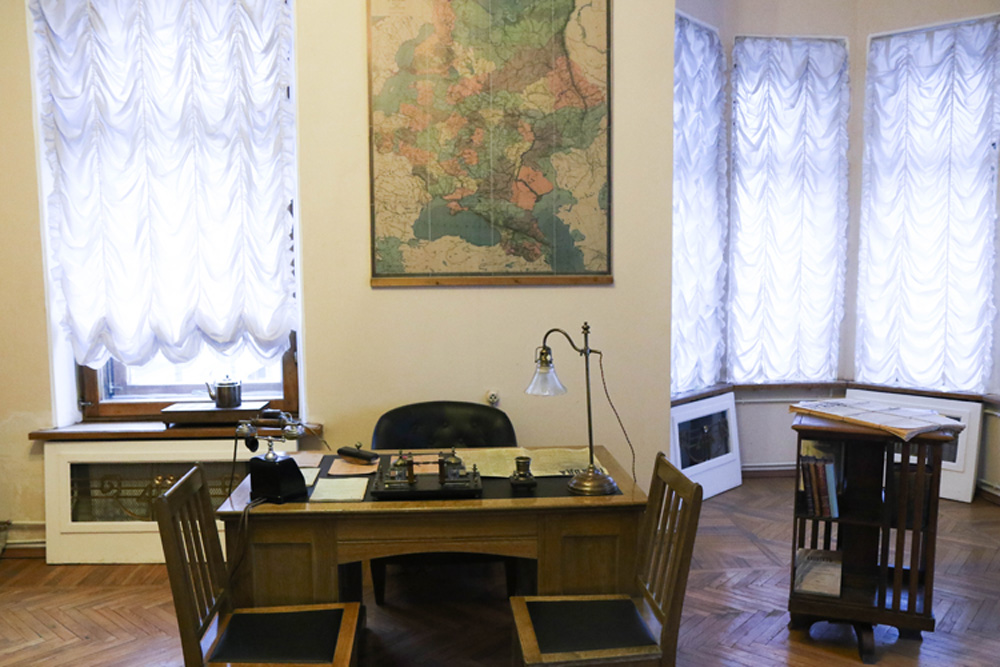

ChessBase 17 - Mega package - Edition 2024
It is the program of choice for anyone who loves the game and wants to know more about it. Start your personal success story with ChessBase and enjoy the game even more.
If you are bored with the turn of events in London classic (with only two decisive games in five rounds), look into Russian "superfinal", where the clash between hungry young talents, seeking to make a name for themselves, and experienced players such as seven-time Russian Champion Peter Svidler. So far the tournament has created a lot of decisive and creative games, and dramatics moments to delight spectators and chess fans alike.
Continuing a tradition of "chess in museums" spearheaded by Russian Chess Federation president Andrey Filatov, the playing hall of the Russian Championships in the Museum for the Political History of Russia. The house was once owned by the Prima ballerina Matilda Kschessinskaya, who was romantically involved with Tsar Nicholas II and other Grand Dukes of the Romanovs. In 1917, after the Russian Revolution, the Bolsheviks dispossessed her and took up their quarters in the building which today is a museum. Recently, Matilda Kschessinskaya made news again because the controversial Russian film "Matilda" was inspired by her life. (See below for the historical context of the venue from ChessBase's Andre Schulz, and the trailer of the film.)
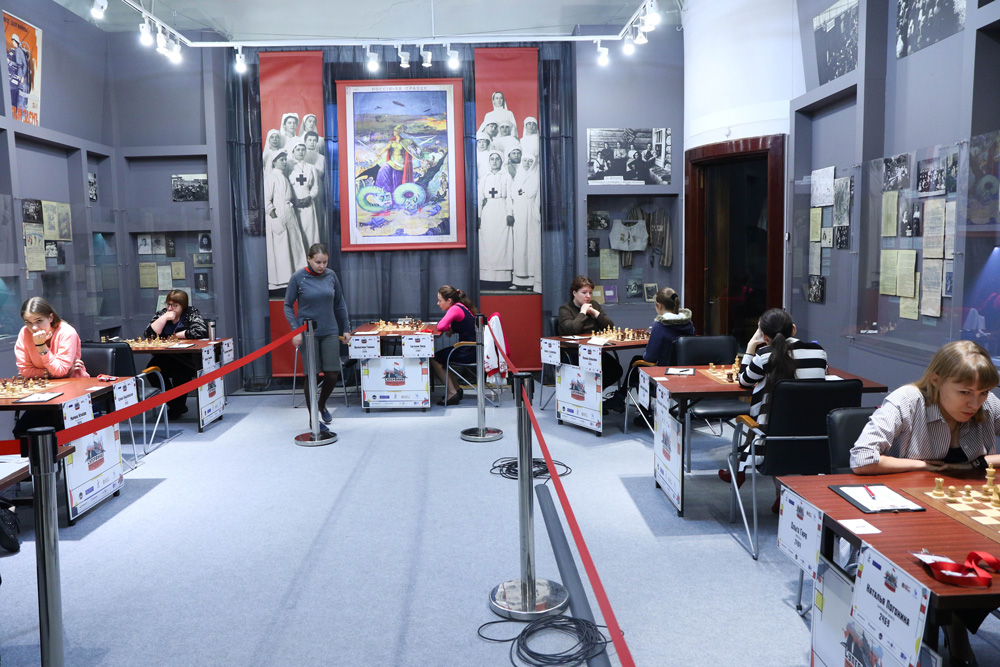
Chess and art go together at the Russian Championships | Photo: Eteri Kublashvili
The first four rounds saw one person taking the roll of 'chief' and another as his deputy! Vladimir Fedoseev, whoese flamboyant and uncomrpomising style has already earned him a lot of fans in his brief time joining top events, is currently leading with four wins and a draw. The Russian's play reminds me of the 'magician from Riga', 8th World Champion Mikhail Tal. Like the Latvian genius, Fedoseev plays risky, and sometimes 'incorrect' chess!
His wins are not usually calm and technical (although Fedoseev still posesses many qualities of a universal player), they entail original positions frought with difficult crossroads where, just as the with Tal before him, has cause '2+2 to sometimes equal 5'. His winning streak of four out of four is such a great result — in fact — many experts might have predicted that +4 is enough to win the tournament outright. Yet Fedoseev achieved this score in just the first four rounds.

Vladimir Fedoseev | Photo: Eteri Kublashvili
Even so, the lead was far from secure, as he could feel the breath of another strong, young and ambitious player on the back of his neck! Daniil Dubov started with three wins of his own before drawing with the defending Russian Champion, Alexander Riazantsev in Round 4. But the 21-year-old Muscovite faltered in the fifth round, losing with the white pieces to veteran Evgeny Tomashevsky.
Dubov played an unorthodox Vienna Game, with a novel position on the board already after move 9.Rb1:
Black was completely equal, and Dubov sacrificed his a-pawn in an attempt to get an attack going on Tomashevsky's king. But black defended calmly until seizing his chance to strike.
Black invaded with 30...Bxd4 31.cxd4 Qc3 with Rc4 coming to target the weak d4-pawn. Dubov resigned on move 40.
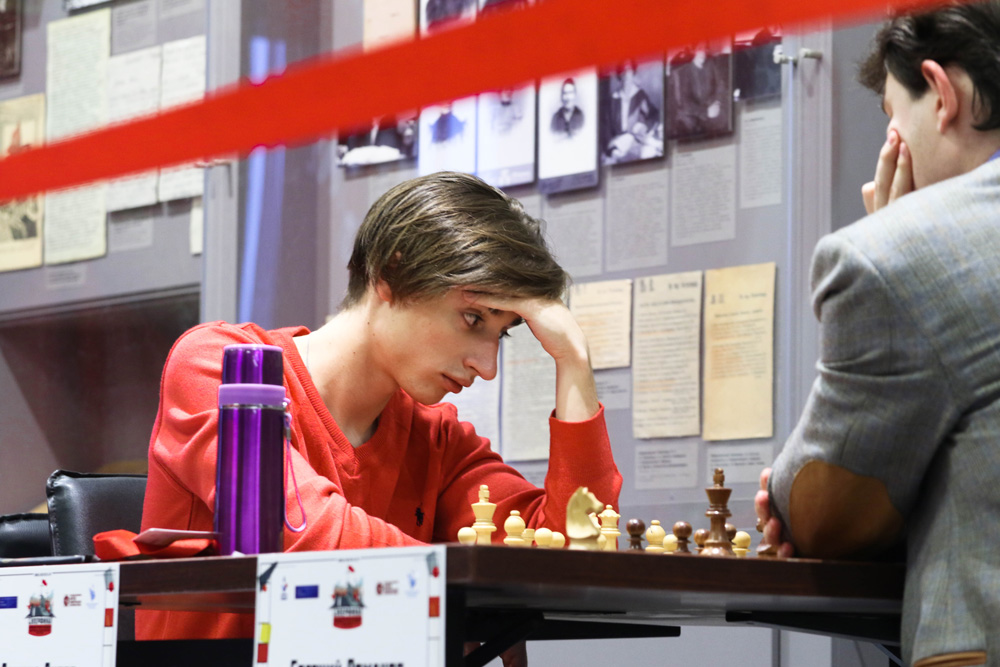
Daniil Dubov | Photo: Eteri Kublashvili
Fedoseev was also finally stopped in Round 5, by Ernesto Inarkiev, but the draw leaves him a full point ahead of Dubov heading into the tournament's only rest day on Friday. His performance so far has entailed two smooth wins with white and two topsy-turvy yet interesting games with black. His first round win against Riazantsev is particularly stunning, according to GM Elshan Moradiabadi.
Never too late for the Nimzo-Indian
Bologan's way to the Nimzo-Indian was very long and difficult, but now the Moldavian grandmaster recommends the Nimzo-Indian to players of all levels because it’s complex and simple at the same time.
Dubov remains in second, despite his loss. His best win so far came in the third round against tail-ender Evegeny Romanov:
With six rounds to go it is too early to talk about a winner but it's beginning to look like Fedoseev's to lose. One can never underestimate Svidler either. After a setback in the second round against Dubov, Svidler posted wins in rounds three and five and should be ready to charge if the two young bucks stumble.
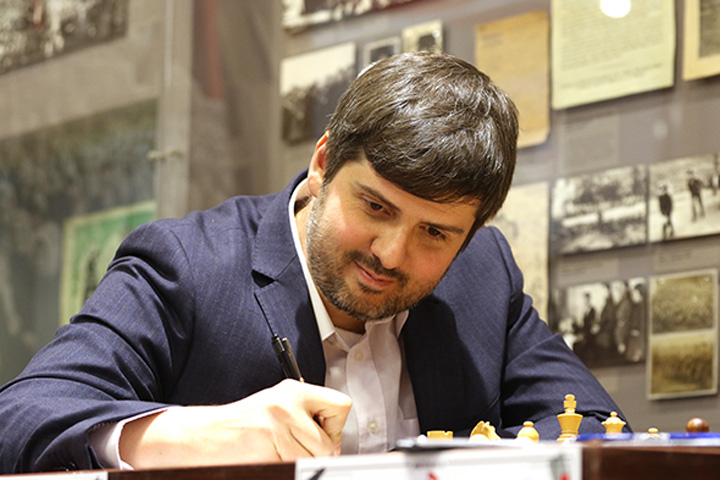
Svidler looks ready to pounce | Photo: Eteri Kublashvili
Commentary by GM Evgenij Miroshnichenko | Source: ChessCast
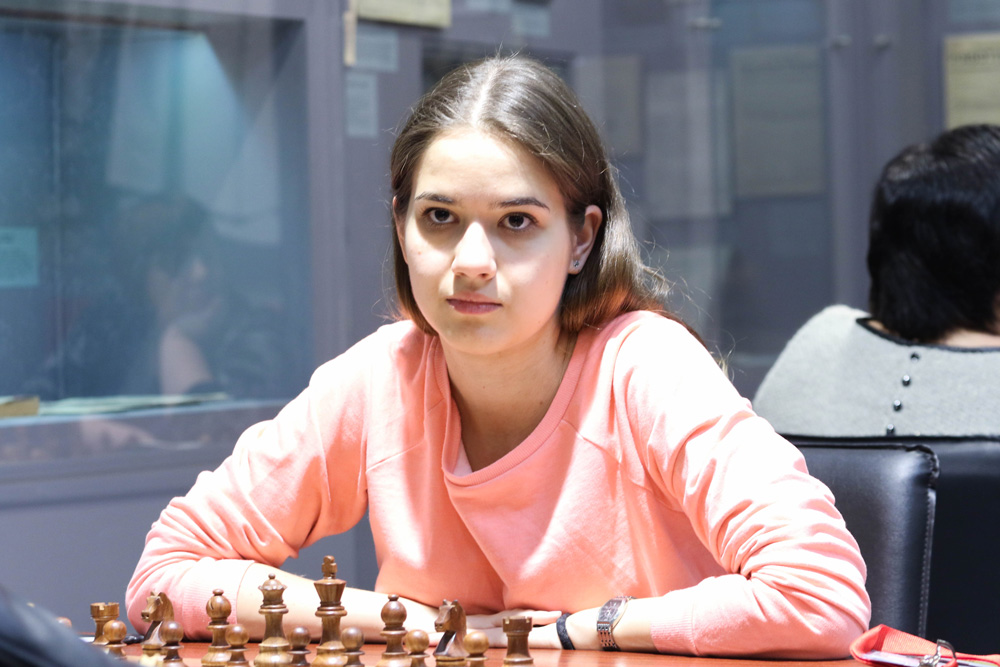
Alina Kashlinskaya | Photo: Eteri Kublashvili
In the women's tournament Alina Kashlinskaya was leading with with 3 / 4, but lost in round five to IM Ekaterina Kovalevskaya, blowing the tournament wide open. Kashlinskaya's sense of danger failed her in the following position with her last move 17.Rb1:
Kovalevskaya grabbed her chance with 17...f5!. White suddenly has no time for 18.b4 but could take her chances in the complications after 18...fxe4! 19.bxc5 exf3 although Black has a very strong attack. Instead 18.Be2 Qh4+ 19.Kd1 fxe4 left White's position in tatters.
That left an opening for Valentina Gunina who won over Aleksandra Goryachkina after the later went for a speculative exchange sacrifice rather than defend a slightly worse endgame.
Joining her on 3½ / 5 was Olga Girya, who won with black against Alisa Galliamova in the longest game of the fifth round.
Black's b-pawn is becoming dangerous, but White is still holding after 79.Rc8. Instead, as her time ticked down precariously, Galliamova played 79.Kd2 Kg6! 80.Rc5? (again Rc8 to swing over to g8 and g2 was the best chance to hold) 80...Rh7 and once the h-pawn drops, it's all over.
Elshan Moradiabadi contributed to this report
by Andre Schulz
Host of the Russian Championship, the so-called "superfinal" is St. Petersburg. The venue of the championship is the Museum for the Political History of the USSR.
A hundred years ago, in November 1917, the Russian Revolution swept away the political and social order of Tsarist Russia. Tsar Nicholas II was deposed and an interim bourgeois government was eventually chased away by the communists. In Russia, more than anywhere else in Europe, the nobility had accumulated great wealth by exploiting farmers and the poor. The hatred of the nobility erupted in the revolution and the Bolsheviks used this hatred to seize power.

A famous villa: from the balcony Lenin held his first speeach to the masses after his return from exile | Photo: Eteri Kublashvili
The revolution led to civil war and at the end of this civil war the nobility had either fled the country or was killed. The splendid estates of the nobility were almost completely destroyed, and even their graves were plundered and demolished. Their palaces in the cities were requisitioned. Tsar Nicholas II, who belonged to the Romanov dynasty, and his family were murdered in Ekatarinburg.
The three cousins George V., King of England, Emperor Wilhelm II, and Tsar Nicholas II — whose grandmother was Queen Victoria of England — played a decisive role in the outbreak of the First World War. In Russia, the policitical clumsiness of Tsar Nicholas II also led to his downfall.
The Russian-Japanese war in 1904/05 had put the Tsarist empire into great economic difficulties and led to revolutionary unrest that lasted until 1907. Instead of initiating urgent social reforms and adapting Russia's backward society to the rest of Europe, Nicholas II. tried to stop the riots with power and armed suppression. Ten years later his reign came to an end and a period of great social upheaval began.

Nurses from the Red Cross were the secret heroes of many a war | Photo: Eteri Kublashvili
The history of Russia is linked to this year's Russian Championships. The venue is a villa which before the revolution belonged to Matilda Kschessinskaya (born 1872), lover of the future Tsar Nicholas II.
Matilda Kschessinskaya was Prima ballerina at the Mariinski theatre and enchanted her public through her verve and gracefulness. Her relationship to the Tsarevich ended in 1894 after Nicholas II had married the German princess Alix von Hessen-Darmstadt, a granddaughter of Queen Victoria.
However, Nicholas II was still a frequent visitor of the celebrations in the house of Matilda who, after the end of her relationship with Nicholas II, entertained a "ménage à trois" with the two Romanov Grand Dukes Sergey Mikhailovich and his cousin Andrey Vladimirovich. When Matilda's son Vladimir was born in 1902 a paternity quarrel broke out between the cousins.
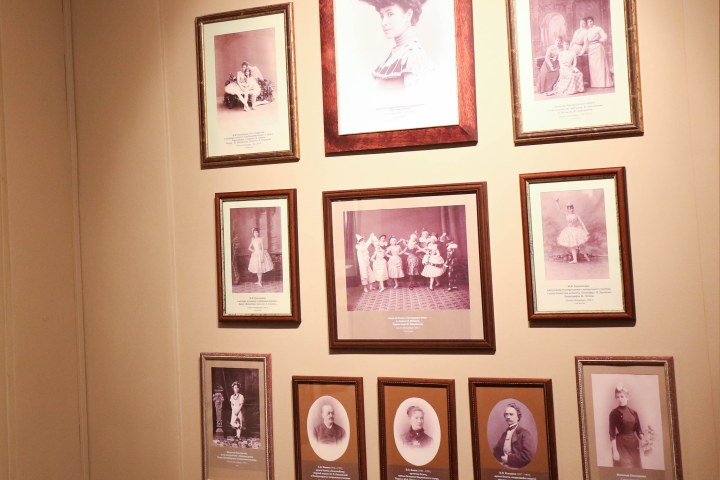
Pictures from the property of Matilda Kschessinskaja | Photo: Eteri Kublashvili
In 1917 Matilda Kschessinskaya was disowned — her wealth and rumours of dubious business dealings had given her a bad reputation among the public. But even before coming to power the Bolsheviks took quarter in the villa of the Prima ballerina, and when Lenin returned from his exile in Switzerland he gave his first speech to the masses from the balcony of the building which was later chosen to become the Revolutionary Museum. However, Matilda Kschessinskaya went to court to sue against her dispossession and even won the process — not that anyone cared.
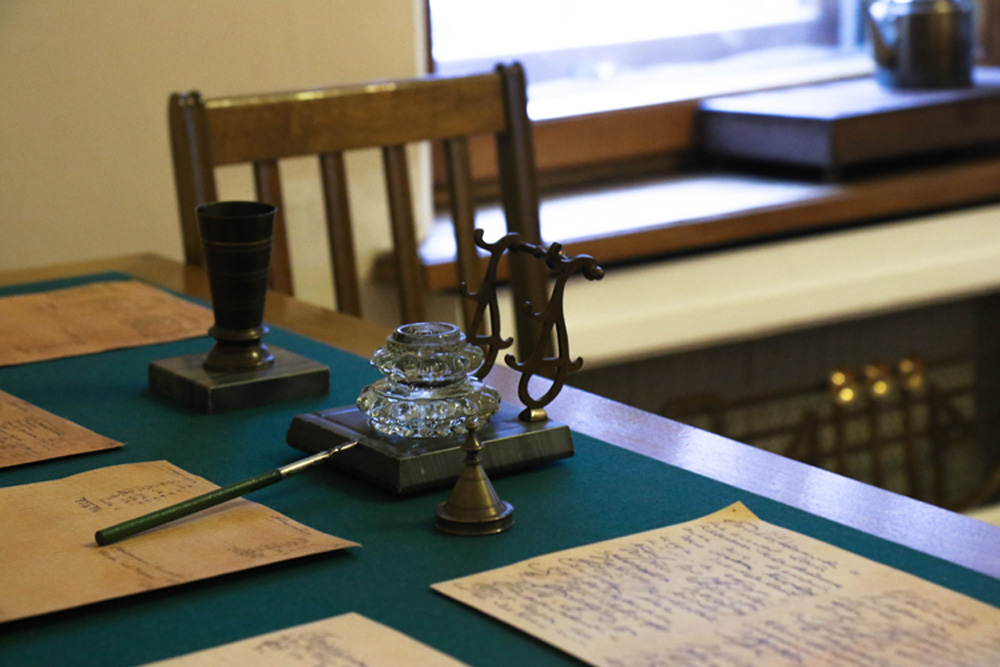
Hand-written letters | Photo: Eteri Kublashvili
In 1920, Matilda Kschessinskaya fled from Russia and in 1921 she married Andrey Vladimirovich Romanov in Paris and became princess Romanova-Kschessinskaya. Her other lover, Grand Duke Sergey Mikhailovich stayed in Russia and was shot by the Bolsheviks — his corpse was thrown into a shaft.
In 1929, Kschessinskaya opened a school for ballet, and among her students were Lady Margot Fonteyn, Lady Alicia Markova, André Eglevsky and Tamara Toumanova. She lived a long life — Matilda Kschessinskaya died 1971 in Paris at the age of 99.
Recently, her fate made headlines again when the Russian director Alexey Efimovich Uchitel turned the love story between Nicholas II and the dancer into "Matilda", an opulent costume film. The film met with violent protests in Russia because some Russian tsarists felt that the depiction of the love story was a bit profane.
Trailer for "Matilda" (2017)
Translation from German: Johannes Fischer